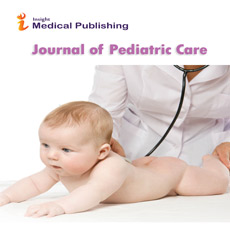Abstract
The Outcomes of Children With Pediatric Acute Respiratory Distress Syndrome
Abstract
Objective:To provide additional details and evidence behind the recommendations for outcomes assessment of patients with pediatric acute respiratory distress syndrome from the Pediatric Acute Lung Injury Consensus Conference.
Design: Consensus conference of experts in pediatric acute lung injury.
Methods: A panel of 27 experts met over the course of 2 years to develop a taxonomy to define pediatric acute respiratory distress syndrome and to make recommendations regarding treatment and research priorities. The outcomes subgroup comprised four experts. When published data were lacking, a modified Delphi approach emphasizing strong professional agreement was used.
Results:The Pediatric Acute Lung Injury Consensus Conference experts developed and voted on a total of 151 recommendations addressing the topics related to pediatric acute respiratory distress syndrome, seven of which related to outcomes after pediatric acute respiratory distress syndrome. All seven recommendations had strong agreement. Children with acute respiratory distress syndrome continue to have a high mortality, specifically, in relation to certain comorbidities and etiologies related to pediatric acute respiratory distress syndrome. Comorbid conditions, such as an immunocompromised state, increase the risk of mortality even further. Likewise, certain etiologies, such as non–pulmonary sepsis, also place children at a higher risk of mortality. Significant long-term effects were reported in adult survivors of acute respiratory distress syndrome: diminished lung function and exercise tolerance, reduced quality of life, and diminished neurocognitive function. Little knowledge of long-term outcomes exists in children who survive pediatric acute respiratory distress syndrome. Characterization of the longer term consequences of pediatric acute respiratory distress syndrome in children is vital to help identify opportunities for improved therapeutic and rehabilitative strategies that will lessen the long-term burden of pediatric acute respiratory distress syndrome and improve the quality of life in children.
Conclusions: The Consensus Conference developed pediatric-specific recommendations for pediatric acute respiratory distress syndrome regarding outcome measures and future research priorities. These recommendations are intended to promote optimization and consistency of care for children with pediatric acute respiratory distress syndrome and identify areas of uncertainty requiring further investigation.
ACUTE LUNG INJURY AND ACUTE RESPIRATORY DISTRESS SYNDROME IN CHILDREN ARE SIGNIFICANT PROBLEMS:THE SCOPE OF THE PROBLEM
Acute lung injury (ALI) and acute respiratory distress syndrome (ARDS) are common diagnoses in critically ill children and account for a significant proportion of all pediatric ICU (PICU) admissions. For every 1,000 children admitted to PICUs, nine to 16 meet the criteria for either ALI or ARDS. Several pediatric studies have used the American European Consensus Conference criteria (1) for ARDS to determine the incidence rates to be from 1.4 cases/100,000/yr to 9.5 cases/100,000/yr (2–7). Although the mortality in children with ARDS is high, upward of 90% in some cohorts, it has been steadily decreasing over the past several years. Significant long-term effects including decreased lung function and exercise tolerance, reduced quality of life, and diminished neurocognitive functioning are reported in adult survivors of ALI/ARDS. However, the significance and consequences of severe lung injury in terms of pulmonary function, quality of life, and neurocognitive functioning in the pediatric population are unknown, and, thus, ALI/ARDS may pose a significant personal, social, and economic burden. It is important that there is an understanding of the basic epidemiology of any disease in children, including its long-term outcomes, not only to direct care of children with the disease but also for designing any new potential therapeutic and rehabilitative strategies to improve the quality of life in children.
Author(s):
Quasney, Michael W. MD
University of Michigan, Ann Arbor, MI.
Abstract | PDF
Share this

Google scholar citation report
Citations : 130
Journal of Pediatric Care received 130 citations as per google scholar report
Abstracted/Indexed in
- Google Scholar
- China National Knowledge Infrastructure (CNKI)
- Cosmos IF
- WorldCat
- Geneva Foundation for Medical Education and Research
- Secret Search Engine Labs
Open Access Journals
- Aquaculture & Veterinary Science
- Chemistry & Chemical Sciences
- Clinical Sciences
- Engineering
- General Science
- Genetics & Molecular Biology
- Health Care & Nursing
- Immunology & Microbiology
- Materials Science
- Mathematics & Physics
- Medical Sciences
- Neurology & Psychiatry
- Oncology & Cancer Science
- Pharmaceutical Sciences

